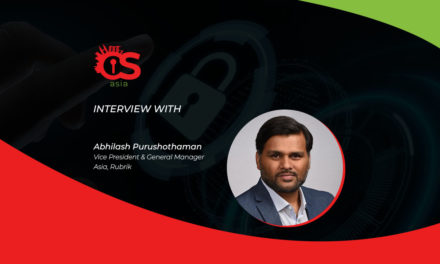Smart network camera tech has raised various concerns about AI biases and cyber risks — but vendors are rising to the challenge …
Everywhere in urban built-up areas, the ubiquitous surveillance network camera is a common sight nowadays. Did you ever wonder who invented this technology?
According to the co-founder of the firm that invented the first network camera, Martin Gren, the inspiration for the network camera began during a business trip in Japan: “A potential customer noticed our experience in networked technology and asked if this could be applied to cameras of which he had a large inventory. Recognizing the potential, I took the idea back to Axis Communications’ headquarters in Lund, Sweden. This was when I came across the work of Carl-Axel “Cacke” Alm, an engineer at Axis, who happened to be in the process of prototyping a network video conference system. The hardware from that exploratory venture enabled us to quickly turn the concept into reality, and the world’s first network camera was born in 1996.”
Martin follows with some answers to CybersecAsia.net’s questions on network camera technology…
CybersecAsia: How has the network camera evolved over the years in terms of impacting traditional security and aligning with modern surveillance needs?
Martin Gren (MG): Limitations in networking impacted the ability of the first network camera to perform on a par with the technology at the time, thus limiting its potential. This inspired us to develop the first dedicated video chip for network cameras which revolutionized the industry, enabling the second generation of network cameras to operate at 30 frames per second.
Since its first iteration the network camera has evolved significantly, featuring high resolutions; forensic wide-dynamic range; high-quality video capture in near darkness; facial recognition; integrated two-way audio capabilities, and better compression capabilities.
Today, network video cameras with on-board analytics can autonomously identify suspicious packages and even detect breaking glass, while edge-based processing allows video data to be packaged and sent for immediate review. Their role in helping security teams think and act fast can save lives in situations, making technology a powerful force multiplier.
CybersecAsia: How is the technology incorporating AI, IoT, and 5G for further innovation in surveillance? What are the cyber risk implications, and how is the industry proactively working to address such risks?

MG: In 1995, we wrote our first whitepaper on what we called “Thinserver technology”. Within this framework, the Network Camera saw the world, and with our print servers at the time, we were the first in the world to ship IoT products in volume!
Today in 2022, IoT is as important and relevant as ever. 5G is an interesting technology that enables mobile use of network video on smart devices, given that proper security measures are taken. As these technologies increase the sophistication of network cameras, so too have cyber risks increased. When setting up a surveillance system, cybersecurity is one of the most critical things to consider nowadays. No one would like to see their security system become the main security risk!
Users need to continuously update the firmware of all devices and components such as cameras, VMS and plug-ins. Having them air-gapped may help a little bit, but unfortunately almost all systems have backdoors, and many cyber incidents are caused by remote access to air-gapped networks through tunnels such as Teamviewer. So even air-gapped networks need to be cybersecure.
Moving ahead, we expect that factors such as up-to-date firmware; signed digital certificates; regular software updates; secure boot; encrypted data/video and so on, will become essential in customer solutions.
As a vendor, we continuously update our firmware for cybersecurity. But what if someone you do not trust upgrades your firmware and puts backdoors which were not there at the time of installation? With a good cybersecurity strategy there are many aspects of time one shall consider:
- The time from a reported vulnerability is discovered until it is fixed
- The time it takes to roll this out across the whole product line, current and old products
- The time it takes for the end-user or integrator to upgrade all devices
- Finally, the timespan within which the products are intended to be used — often a long time out of warranty
To facilitate this strategy, we have developed tools for upgrading even out-of-production products and promise Long-Term Support — that means we do security upgrades of most old products, even those that are well out of warranty.
Similarly, to ensure that cybersecurity best practices are being implemented throughout the value chain and the product lifecycle, organizations need to partner with vendors that are prepared to work with them to manage cyber risks via strict processes that are continuously adjusted in line with landscape developments.
CybersecAsia: Can you give us an overview of the global trends, regional impact and from there, give us some predictions on how the trends will evolve in the near and medium terms?
MG: General perceptions towards surveillance have shifted, and we have observed that the average person is today much more positive about network cameras today than they were 20 years ago.
AI-powered solutions are receiving increased attention, with governments looking to harness machine learning abilities for more sophisticated monitoring and analytics capabilities. Conversely, a continued focus on cybersecurity has contributed to heightened awareness of the risks that network cameras could potentially pose, possibly constraining growth.
Based on these market observations, we anticipate the following developments to shape the network camera and surveillance landscape in the near- to medium- term:
- Network cams complementing traditional security: Instead of having guards doing tours all through the night, IP cameras can be used for perimeter surveillance. This saves on labor costs and gives a better solution to the end-user.
- Cybersecurity no longer a luxury or afterthought: Our security systems are producing years of video every day and some camera footage may not be watched for a long time. But when there is an incident, it had better have been well recorded!
- Ethical and bias-free AI practices: AI can enhance image quality or help the system to differentiate objects and persons such as car registration plates or face detection/recognition. With these capabilities, ethics and bias issues are already surfacing, so manufacturers are expected to ensure regulatory compliance.
- Sustainability as an essential consideration: In our products, we work on reducing power consumption and thanks to high light sensitivity capabilities, many of our products do not require any lighting, thereby reducing power and light pollution. By using edge computing in the products, we are also able to reduce the power consumption requirements in server rooms. We expect sustainability mandates to affect all other vendors in the industry.
- The emergence of Cloud and Video Security-as-a-Service: Another trend we see is video surveillance as a service often using telcos. Cloud computing provides the benefits of not having any servers that need to be maintained and upgraded, enabling adopters to go into an OPEX instead of a CAPEX model.
In sum, the future for security camera integrators with good knowledge in cybersecurity remains promising, especially with many upcoming trends in the future!
CybersecAsia thanks Martin for sharing his insights on the evolution of the network camera.

















